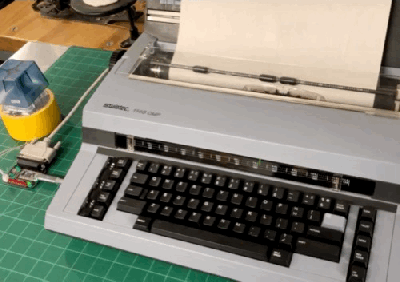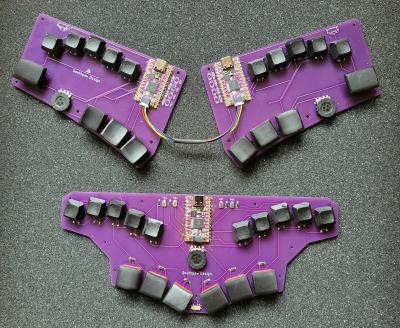If you want to talk to a typewriter using something other than your fingers on the keys, you could do a lot worse than to pick up a specimen featuring a Centronics parallel port. That’s what happened to [mlupo], who came across an old Swintec 1146 CMP and decided to hack it into an art installation.
 At the push of a giant, clicky button, the typewriter now spits out family stories. This is all thanks to an Adafruit KB2040 keyboard driver being used in a new, exciting way — as a printer driver.
At the push of a giant, clicky button, the typewriter now spits out family stories. This is all thanks to an Adafruit KB2040 keyboard driver being used in a new, exciting way — as a printer driver.
More specifically, the CircuitPython program running on the KB2040 takes in a text file and then sends the data one character at a time until a newline is reached. At that point, the typewriter sends a busy signal and the characters are typed.
As soon as the typewriter is no longer occupied, the data stream picks back up until the next newline or until the file is completely typed out.
Once [mlupo] figured out enough of the parallel port protocol, they were able to build a custom breakout board with the KB2040, a female parallel port, and a row of LEDs for debugging that [mlupo] kept because they look cool.
The KB2040 sets the values high on a series of the parallel port’s data pins, along with the port’s STROBE pin, which pulls low when data is ready. During each STROBE cycle, the high and low pins are read by the Swintec as a binary character.
Of course, you can always use the power of Pi to build your own modern typewriter.
Thanks to [foamyguy] for the tip!














